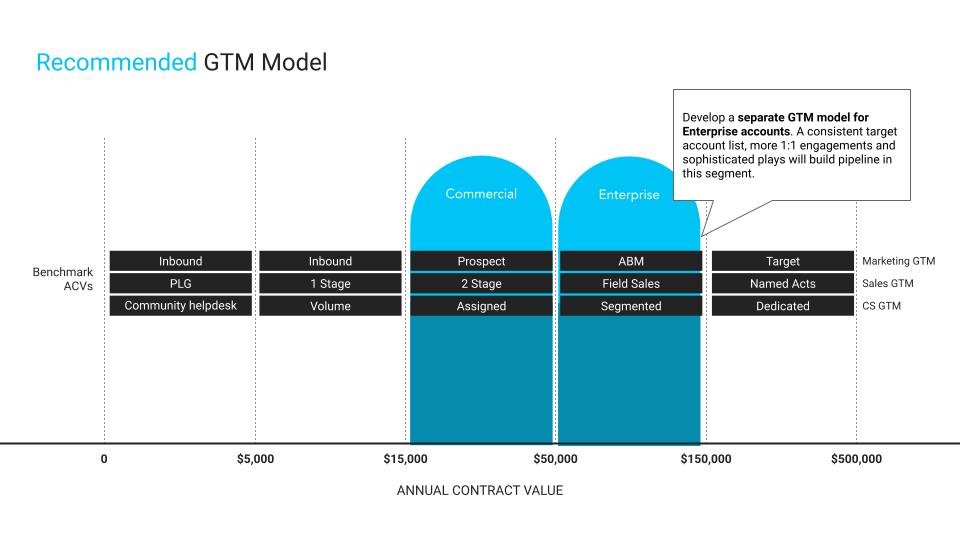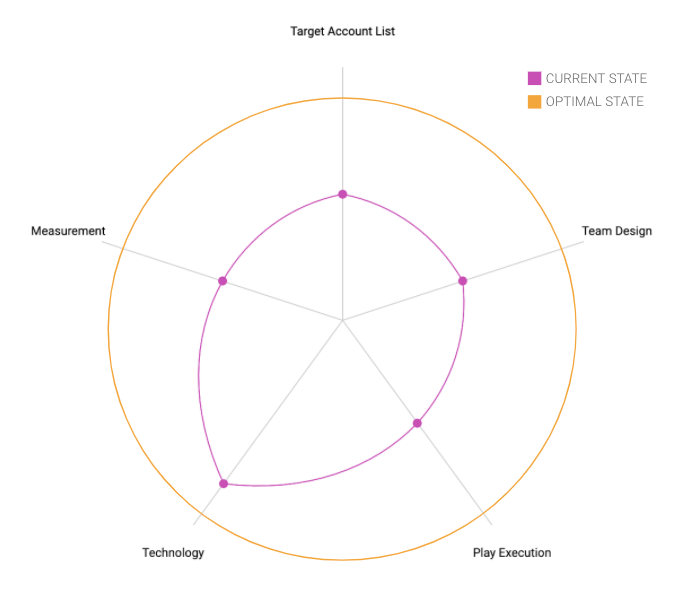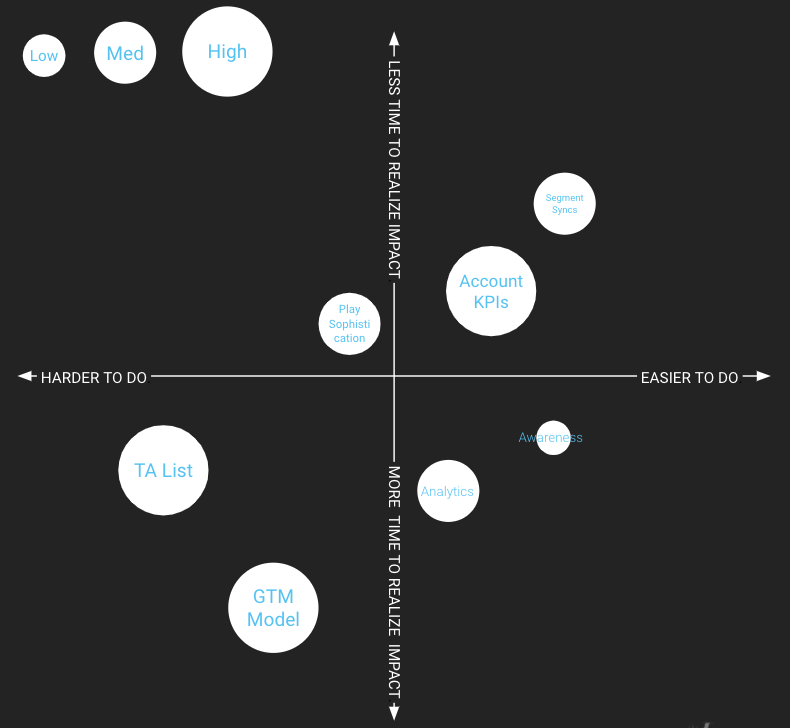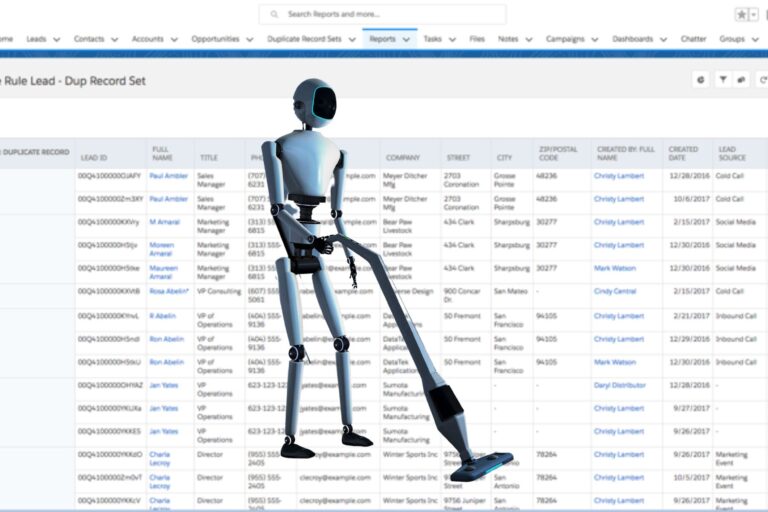The first step in an effective ABM strategy is conducting a diagnostic assessment of the current account-based status quo. Identify strengths and opportunities for improvement.
Conducting an account-based strategy (ABS) assessment
In order to evaluate an account-based strategy, use both qualitative and quantitative data from stakeholder interviews, documentation, and prospecting programs across:
- Account targeting
- Prospecting skills
- Metrics
- Tech stack
- Program orchestration
- Measurement
The assessment diagnoses issues within your organization, ideally root causes of issues rather than symptoms. For example, you may be misapplying the same GTM model to different segments.
Typical recommendations from a diagnostic assessment include:
- Leverage a GTM model appropriate for engaging different account segments
- Expand and unify target account lists
- Increase orchestration and alignment between teams
- Improve measurement of account-based strategies
A one-sized GTM model does not fit all markets
Led by its chief marketing officer, Doug Bell, LeanData had previously identified a key root cause to varying levels of performance in the Enterprise segment when it noted the same GTM model was being deployed for all its segments.
LeanData has excelled in its Emerging Commercial (<250 employees) and Middle Market (251-1,000 employees) segments. The large majority of LeanData’s over 800 customers fall into those two categories. And, while there have been noticeable big wins in the Large Enterprise segment, the qualified pipeline in the segment is inconsistent and remains a challenge.
Winning by Design’s diagnostic assessment validated the assessment of LeanData’s senior management team. Currently, all of LeanData’s prospective accounts are engaged with a two-stage GTM model, combining traditional marketing programs and an active sales development team (SDRs). This two-stage approach is appropriate for smaller commercial accounts, but does not address the complex buying cycles of enterprise accounts.

The recommendation is to develop a separate GTM model for Enterprise accounts. This model is to include a consistent target account list, more one-to-one engagements and tailored, personalized plays – encompassing both field sales and marketing – to create pipeline in this segment.
LeanData’s ABS diagnostic score
So, foundational strengths exist, and a need to deploy diverse GTM motions has been confirmed. With that in mind, where does LeanData need to improve?
The answer lies in making incremental improvements … most everywhere.

Let’s take a deeper look at four specific recommendations based on the diagnostic assessment..
Develop a consistent target account list
Currently, LeanData’s targeted account list is populated with companies hand-picked by account executives (AEs), interspersed with several accounts with intent based on a loose ideal customer profile (ICP). A consistent, tiered target account list developed with a data-driven approach will better engage LeanData’s next best customers over time.
Increase orchestration between teams
Within the existing organizational structure, LeanData needs to increase team orchestration and alignment between AEs, SDRs and Marketing with a defined target account list, team design, weekly team syncs and key performance indicator (KPI) measurements.
Mature play sophistication
Currently, SDRs conduct account research based on an ICP and then run GTM plays. LeanData would benefit from maturing play sophistication with better value exchanges, segment targeting and more orchestration between Marketing and AEs.
Improve ABS measurement
LeanData should leverage its existing technology and account-based analytics to improve measurement of awareness and engagement within its target account list. Defined KPIs and measurement will increase pipeline generated from target accounts.

With the diagnostic assessment feeding objective analysis to the LeanData team, it’s now time to get to work on developing and deploying corrective actions. With ABM, it starts with developing target account lists on which to base prospecting.
Currently, LeanData is in the process of developing its initial target account list, and that process will be covered in the third post of this Journey to Effective ABM series. Stay tuned!
Sharing the journey to effective ABM
This post is the second in our series of articles that chronicles LeanData’s journey to finally getting account-based strategies right once and for all. While it’s early days for the series, our aim is to share our learning for the benefit of your learning, resulting in a rising tide that lifts all our boats.
Please check out other ABM-themed posts in our ongoing series:










